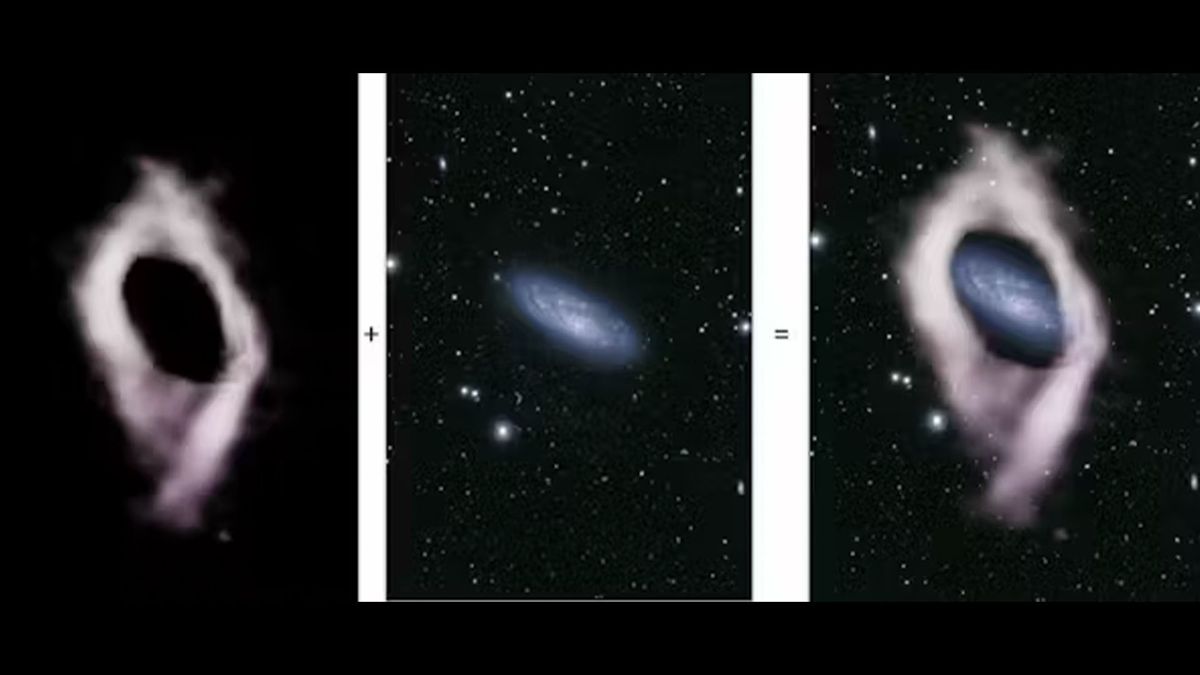Galaxies come in many shapes and sizes, from giant, slowly rotating ovals and fast-whirling spiral disks to faint ball-shaped blobs and dwarf irregulars.
Most large, bright galaxies — including our own Milky Way — are orbited by a gang of much smaller dwarf galaxies.
Using CSIRO's Australian Square Kilometre Array Pathfinder (ASKAP) radio telescope, on Wajarri Yamaji Country in Western Australia, we recently discovered an enormous ribbon of hydrogen encircling a spiral galaxy called NGC 4632.
NGC 4632 appears to be a very rare formation called a "polar ring galaxy," as the hydrogen ring seems to be rotating over the poles of the galaxy's disk.
The gas in the ring, which makes up about half of the system's mass, was likely hoovered up from a companion galaxy.
Source
Most large, bright galaxies — including our own Milky Way — are orbited by a gang of much smaller dwarf galaxies.
Using CSIRO's Australian Square Kilometre Array Pathfinder (ASKAP) radio telescope, on Wajarri Yamaji Country in Western Australia, we recently discovered an enormous ribbon of hydrogen encircling a spiral galaxy called NGC 4632.
NGC 4632 appears to be a very rare formation called a "polar ring galaxy," as the hydrogen ring seems to be rotating over the poles of the galaxy's disk.
The gas in the ring, which makes up about half of the system's mass, was likely hoovered up from a companion galaxy.
Source























